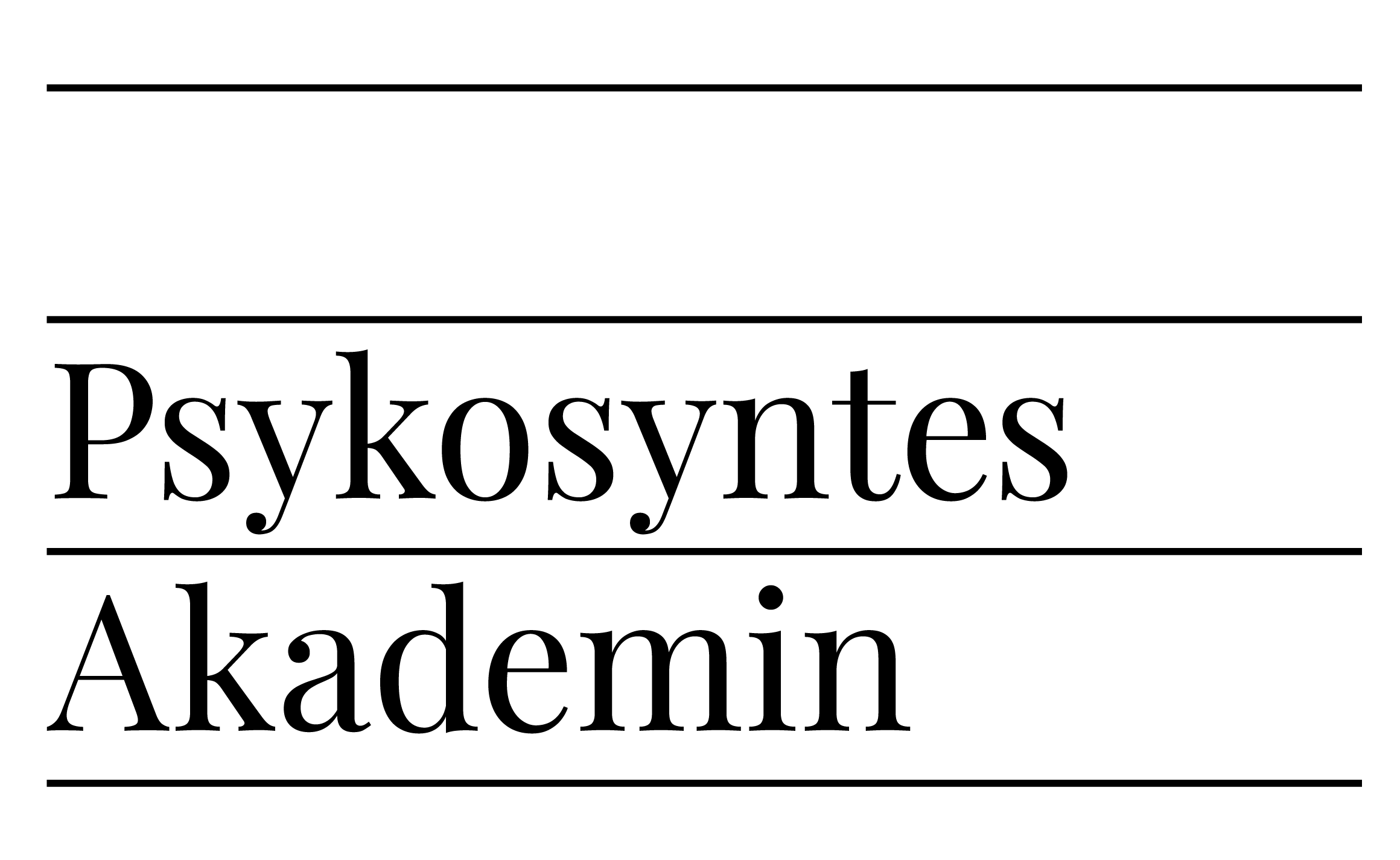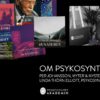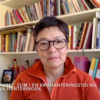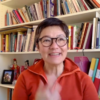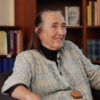(From an address given by Andrea Bocconi at the Global Psychosynthesis Conference 2016, Taormina, Italy)
In this address I wish to offer some reflections on a possible Ethno-Psychosynthesis, that is, a comparison between our views of the human being and those of people from other cultures. Our work on this theme ought to make us reflect on the theory and practice of Psychosynthesis, and avoid the danger of ethnocentrism: seeing as absolute truth what is really a historically and geographically determined partial truth.
While I was studying Psychology at the University of Padua, I never once heard mentioned the sophisticated science of the mind found in Tibetan Buddhism, or in Hinduism, or in the Guarani culture of Latin America. Psychology was solely “ours”, and it pretty much originated in Wundt’s first laboratory for experimental psychology, with Greek roots in Aristotle’s On the Soul (De Anima) – Western and white, of course.
Ralph Linton (in Coppo, 2003, p. 99) wrote that, for the human being, culture is like the water in which a fish swims: “The last thing a fish would notice would be the water”.
So what is Psychosynthesis’s water? If we move to another aquarium, what will we find out about ourselves?
I have worked and taught in various cultures, and these experiences gave rise to this urgent need for reflection. Besides, Asia, Africa, Latin America and the Middle East are reaching us in the huge waves of migration, and they pose new challenges for workers in mental health and education.
We cannot expect a forced and uncritical integration; cultures become mixed and they evolve. Hybridization is a wealth, and new problems create new solutions.
I have been in Psychosynthesis since 1971, thanks to Piero Ferrucci, who introduced me to Roberto Assagioli: my teacher till his death, and still my teacher.
In this half-century I have seen Psychosynthesis grow in the world, and this congress, like the one in Rome, is proof of that.
The movement has grown, Psychosynthesis is more widely known and esteemed, its applications in different fields have multiplied and demonstrated its efficacy, but to my mind, and as far as I know, its theoretical working out has been scanty. It risks stagnation and a continual return to its source, the ipse dixit of medieval theology, in this case Assagioli, not Aristotle. In this regard I have found quite refreshing the debate between our dearly departed friend John Firman and Ann Gila on the position of the Self in the egg diagram. (I shall come back to this.)
And to think that Assagioli himself wrote: “Psychosynthesis is neither a doctrine nor a school of psychology; it is not a particular or special method for self-realization, therapy or education. It may be denoted (I don’t use the term “defined” since all definitions are limited and limiting) essentially as a general attitude and effort towards integration and synthesis in all fields, especially the above-mentioned ones. It could be called a “movement”, a “tendency”, a “goal”. Orthodoxy does not exist in Psychosynthesis, and no one, starting with me, can proclaim himself the true and authentic representative, head or leader. All of its exponents try to express and apply Psychosynthesis as best they can, and anyone who reads or hears its message or receives benefit from the use of its methods, will be able to establish the degree to which each exponent has expressed or will express its “spirit”.”
In short, the theory of Psychosynthesis is a map, but “the map is not the territory”, to quote Korzybski, whose book General Semantics Assagioli kept in his study.
If the theory, as map, describes the territory, the practice of Psychosynthesis is the walking and working in the territory: some territories are familiar to us, and you could say we don’t even see them anymore, as the fish doesn’t see the water.
Does our map work in unfamiliar territories?
Psychosynthesis runs the risk of being self-referential – paradoxically: Due to the breadth of its model and its inclusiveness, we might behave like the frog at the bottom of a well, ignorant of the great sea.
Theory and practice put to the test in others’ territories
The cartographers of the Roman Empire, of places where they had never been, would write: hic sunt leones, the unknown is always dangerous!
On several occasions, for varying lengths of time, I have had the opportunity to teach and practise Psychosynthesis in the world: in India, with the Alice Project, at schools of Sarnath and Bodhgaya; for several years in Indonesia, collaborating with the Balinese psychiatrist Suryani [1] ; twice in Kenya with the terrific training programme created by Piero Caforio and Maddalena Colangelo; in Burkina Faso at a school founded by the Verso Association; In Nicaragua with street kids’ educators (themselves ex street kids [2] ); recently at a public school in rural Bolivia.
I have also collaborated for many years with WYSE, the organization founded by Marilyn Feldberg in 1989 and born in a congress like this one. It is an intensive programme of leadership training that brings together young people from all over the world, a grand intercultural experience in which Psychosynthesis is truly put to the test. These days it is led by ex participants, such as: Andrew McDowell for WYSE International, and Sandro Mazzi for Italy.
The Universality of Psychosynthesis?
In light of these experiences we wonder what is universal and what is determined by the culture and times of Assagioli, a Jewish Italian doctor born towards the end of the 19th century into a family of Theosophists, living for twenty years under fascism, pioneer first in Psychoanalysis and then in Humanistic and Transpersonal Psychology.
Let’s start by saying that to speak of a conception’s universality is already an almost Ptolemaic exaggeration. At best we should settle for calling it planetary, or better, earthly. We don’t know what the psychology of other universes is like.
It is, however, indisputable that there exist bio-psycho-cultural constants throughout the planet: birth, development (though not all the stages are universal), sexuality, procreation and the education of children (this, too, very different in the various cultures), the experience of sickness, ageing and death, the dimension of the sacred. The biological stages are registered in cultural matrices that determine our being in the world. How do we construct our identity, our relationships with others, the view we have of life’s meaning?
Assagioli provides two maps, the egg and star diagrams: the one represents the anatomy of the psyche, the other, to my mind, its physiology.
[1] Regarding Psychotherapy, let us remember that in 1994 the SIPT organized the International Congress of Psychotherapies and Cultures, with the participation of, among others, L. K. Suryani, Tobie Nathan, Piero Coppo, L. Pisani, M. Felberg, L. Ancora, M. Rosselli, and many other prominent exponents of anthropology and ethno-psychiatry.
[2] See the biography by the founder, Zelinda Roccia di F. Caminoli: Perché non mi dai un bacio, Jaca book 2016.


In the Psychosynthesis of nations Assagioli said that the various cultures develop certain functions differently, they have “different personalities”, to be integrated in a planetary synthesis, of which the U.N., with all its limitations, is a manifestation. Kardiner’s theory of the basic personality confirms this hypothesis, with which popular psychology also agrees in its attribution of certain characteristics to certain peoples: romantic, bungling Italians, reliable yet rigid Germans, etc.
If we want to reflect seriously on this, we need to highlight and develop one of the themes less treated in Psychosynthesis, that of the collective unconscious and its relationship to the personal unconscious and hence to the construct we call identity. In some cultures the biopsychic membrane is more porous than in others, the community is more important than the individual and it strongly conditions the will. Magic is more widespread and belief is shared, the individual will is narrower and determined by collective prescriptions and external influences, which must be taken into account. The confused state of an emigrant may arise from the loss of reference points, from not identifying where the gods or evil spirits are, from the lack of rituals that keep the world in balance.
Let’s look at the points Assagioli considered essential for Psychosynthesis training, while keeping this intercultural and transcultural perspective: the subpersonalities, the “I”, disidentification, the will, the ideal model, the superconscious, the higher Self. Let’s see if changing our point of view helps the theoretical model or puts it in crisis.
The subpersonalities
In our culture we believe that everything or almost everything happens “inside us”, but this is not so for everyone. And subcultures coexist in the same nation, same city, even the same social environment.
Giovanna, a fifty year-old housewife, consults me because of her anxiety, which is causing her tachycardia. Her cardiologist has sent her.
After much hesitation, in recounting her story she says that her mother-in-law, a sorceress by profession (sic), has always tried to take her daughter away from her, and ever since she managed to remove herself from the woman’s influence by persuading her husband to move the family to another town, a series of paranormal phenomena have manifested in their home: a smell of sulphur, footprints on the ceiling, noises at night. Moreover, she has felt a “presence in her body” that brings uncontrollable shaking as well as an inner voice that insults her. Being very religious, she has turned to several exorcist priests with only temporary results. Similar phenomena are manifest in her daughter too. She asks me if I believe what she tells me. I answer that I have seen situations like it in other cultures (trance and possession) and that anyhow the thing to do is to reinforce the “I”. By the way, the diagnosis of trance and possession has been included in the DSM5, out of respect for the view of non-Western psychiatrists.
In later sessions I give her the Rorschach test, which shows no psychotic or hysterical trait that might warrant hallucinations or deliria.
At this point I decide to “treat” the entity too, addressing it in dialogue as if it were a subpersonality. During the dialogue Giovanna is fully conscious. Thus begins a process of disidentification, which weakens more and more “the thing” and allows Giovanna to gain some freedom. She now goes out alone and is starting to paint. The family map is changing too, thanks to a session with a “tribal” setting, led also by an ethno-psychiatrist and other workers.
Ellenberger in The Discovery of the Unconscious compares the traditional systems of cure with the psychodynamic view.
| THEORY OF ILLNESS | THERAPY |
| Intrusion of an object that causes illness | Extraction of same |
| Absence of the soul | Rediscovery and restitution of the lost soul |
| Introduction of a spirit (possession) | Exorcism, mechanical extraction, transfer of the spirit to another living being |
| Infringement of a taboo | Confession, atonement |
| Sorcery/Witchcraft | Restorative magic |
Was that “thing” inside Giovanna a subpersonality that was not integrated, or an evil spirit? Had it been sent by the sorceress mother-in-law? The answer will be different depending on the cultural context. In many places a purification ritual, with sacrifices, would promptly have been prepared. The Catholic exorcist had tried to drive away the evil spirit in the name of Christ; in our culture Giovanna might have been treated with antipsychotic drugs by a psychiatrist. In the south of Italy up till the sixties tarantism, studied by De Martino in the 50’s, was successfully treated with music and dance.
Who is right? Everybody: what counts is the healing; and the theory and practice of the work with the subpersonalities is flexible enough to be helpful anyway.
In any case, it is a question of “negotiating with the invisible”.
The “I” and the process of disidentification and self-identification
“I”: it is a word we use insouciantly hundreds of times a day, but do we really know what “the dangerous little word” (dangerous for Hinduism) means? The writer Carlo Emilio Gadda defined it as “the most putrid of pronouns”.
There is a certain semantic confusion, so we must specify in what sense we are using the term: in general we refer to an impression of continuity in space-time; on waking each morning it’s still me! Cells die and are born continually, even those of the skeleton will all be different in ten years. Memory tells us a story that is continuously rewritten, largely lost, or stored in archives that are virtually inaccessible.
For Psychosynthesis the “I” is at the centre of the field of consciousness and the will, if we superimpose the star diagram on the egg diagram. This “I” is similar to the witness, referred to by many meditative practices in awareness: an “I” that does not identify with the contents of consciousness. Ramana Maharshi taught the meditative practice of “neti-neti”, I am neither this, nor that, reintroducing the Advaita Vedanta view: disidentification in its pure undiluted state. This is in order to arrive where? To the Atman, the higher Self, of which, for Assagioli, even the witness “I” is but a reflection.
Buddhism denies any ontological reality of the Self, at least in some schools. This is the doctrine of the anatman, or anatta. As I understand it, the common point is that no separate Self exists; everything is interdependent, as quantum theory also shows. Not by chance, Assagioli places the higher Self at the top of the egg diagram, on the boundary, so it is personal and transpersonal at the same time, the drop and the ocean or, as Shankara wonderfully says: the air inside the vase is no different from the air outside the vase.
But even the experience of the Self can be described by different models.
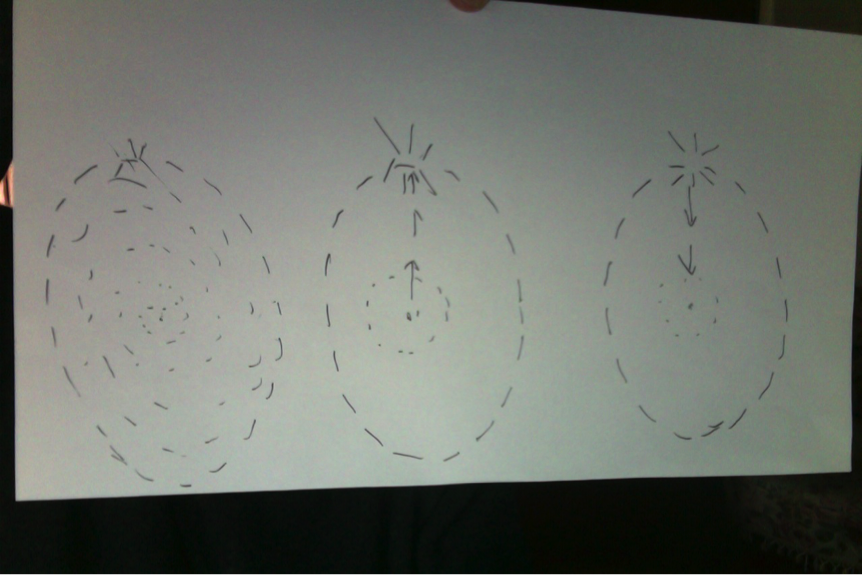
DRAWING
1) as ascending movement of the “I” (psychological mountain-climbing),
2) as descent of the Self, grace, that falls into the field of consciousness (Saul of Tarsus’s conversion)
3) as the field of consciousness’s expansion to include the whole egg diagram, as I understand has been suggested: The union with all, to which are testimony the mystics’ writings, Spinoza’s pantheism, and also animism with the nature spirits. Different models describe different phenomena, and they are not incompatible, or rather they coexist like the wave and the quantum theories of light. They seem incompatible, yet correctly describe and explain different phenomena. An Indian psychoanalyst, Sudhir Kakar, says that for an Indian, born into non-dualistic thought, this problem does not exist.
No one has exclusive claim to the sacred, the numinous.
So each culture will emphasize either inclusiveness and connection, or disidentification. A colleague of mine once suggested the classic form of the disidentification exercise to a group of African students, but they disputed it: “I am my people, my village!”
We will therefore have to “speak the language of the place”. The “I” cannot stand in the sea of a culture without being imbued by it. A great master of shadow puppetry, when called to teach in Switzerland, was accompanied after each day’s work to his hotel, and left alone, perhaps out of respect for his rest and privacy. But this is a Swiss view! In that isolated situation, accustomed as the master was to continual connection with people, temples, signs of orientation in the cosmos, and the rituals that maintain balance, he decompensated and entered a psychotic state, which luckily was temporary.
The Muslim must always know the direction of Mecca, and it was the first question the boy from Yemen asked at the WYSE camp on arriving in London.
A Balinese woman married to an Italian, was cheered up in a session by hearing me speak my poor Indonesian. In an Umbrian township she has rebuilt her little temples, all facing the right directions. The “I” is not independent, and the dimension of the sacred links us first and foremost to ourselves. Alberto Alberti will speak to us about this from the viewpoint of serious psychopathology.
The Bolivian Guarani not only lost their lands and their beliefs with the European invasion. Let us remember that it was debatable whether the “Indians” (generic name imposed by the conquistadores) had a soul. SEE PHOTO

Today their refound identity comes from the recovery of their language, and of their original names, abandoned so the Guarani could blend in with their victors. The election of a native to the Presidency of Bolivia has enabled the indigenous peoples to rediscover identity and pride. The kids these days want to learn the language of their forefathers, and their wondrous cosmogony with its creation myths, the Tierra sin mal.
Here I’d like to say that we understand the Self if we understand the psychic field Jung called the collective unconscious, and Assagioli represented with the number 7 in the egg diagram – remarkably neglected in the theoretic deliberation and teaching of Psychosynthesis.
Will and ideal model
Strictly connected to what has been said is the question of the will. The advanced programme of WYSE is centred on the will. As I have said, it is an intercultural and transcultural programme of leadership training. One of the most expert trainers, Sandro Mazzi, told me in an interview the aspects of Psychosynthesis that had been the most problematic for some participants.
A Japanese participant wrote of the cultural effort he had to make to identify with an individual will, starting from his needs. The strong identification is with the collectivity.
With the subpersonalities the Turks have difficulty in thinking that people can have many ways of being, without losing their identity: “this is at loggerheads with consistency”, says Mazzi, who knows the Turkish culture well enough, having married a woman from Istanbul!
The Muslim kids, invited to place their attention on a candle at the centre of the group, refused to do so, as they felt they could pay attention not to an introspective unifying centre, but only to Mecca – a conflict between the will of the “I” and that of the Self, or of the spirit. If you find another unifying centre, you contradict your values.
The problem is that all the manuals of intercultural communication are written by Westerns.
Ethno-psychosynthesis: the practice
You have already seen a few examples. I’d like to relate three particular moments of therapeutic sessions.
The Bulgarian boy: Vassili speaks very poor English, and perhaps for this reason he never talks in the WYSE group sessions. The programme includes an individual session, and he is assigned to me because the native English-speaking leaders cannot understand him, whereas I seem able to. He is a science student; he has a stiff body. I decide to aim at the unconscious, hoping that mine and his will communicate better than we can at the conscious level.
After a preparation, I ask him to communicate the first image that comes to his mind: it is a high wall. I suppose it has to do with his isolation in the group, and perhaps not only in the group. Anyhow, I think it can’t hurt to try finding out what is on the other side of the wall. With some effort a process begins that concludes at the end of the session with the vision of a great meadow beyond the wall, over which he climbs.
After he opens his eyes, I wish to discuss what happened, so as to tie it to themes in his life.
To my surprise he doesn’t mention the wall: he talks of a light that came from me, a blue light, and he decided to let it enter him. It spreads throughout his body as energy, and gives him a sense of wellbeing. For him it is an absolutely real experience, not a symbolic modality of the unconscious. I tell him I am not aware of all that he has told me, but I am happy he felt it a positive experience. He opens his arms with a stiffness that contrasts with his smile. I am later told that Bulgarians often talk of subtle energies and comment on people’s auras.
The key here is to rely on the wisdom of the unconscious, which will bring about the necessary process, and which in some way communicates with the archetypes.
A Balinese psychiatrist, who participates in the group to which I teach the Rorschach test, asks me for an individual session. When he comes and I ask him what’s the problem, he says: I have had bad backache for months. I’m not sure why he is coming to me, since he speaks to me only of physical pain. I ask him what he has done about it so far. He says: massage, anti-inflammatories. I haven’t a clue what to do, so I decide that since he is not talking to me about psychological problems, I will have to speak the language of the symptom. I have him lie down and relax, then I touch him lightly on the painful spots to feel what his body says. The Balinese are not very verbal, especially in English, and my Indonesian is not good enough for a deep conversation.
When he gets up again, he says he feels a little relief, although it seems to be just a polite remark. I ask him to tell me about his life in the last year. He says his brother died and it is now his duty to look after his brother’s five children, who, together with his own, make quite a number of mouths to feed. It’s enough to break anyone’s back: all this responsibility and economic hardship. He had not thought of that.
At least the body is the same for everyone, and the Balinese are very connected with the sensation function and they move harmoniously. I don’t know if the backache got better, but the man did become aware of that part, which wasn’t managing to support so much weight.
Speak always in the language of the other, seek to be in tune with him or her, and do not propose our model.
Burkhina Faso
I guide a group of teachers in a visualization that takes them back to the time they were pupils in primary school: what did you experience, Emanuel? Fear, I was always afraid. And are your pupils afraid of you? And how are you like the teachers you have had?
Identification, empathy, disidentification and a small insight.
Nicaragua
Los Quinchos Project
Zelinda Roccia, who receives twenty year-old street kids and takes them away from drugs and youth gangs, asks me to give a week-long course in Psychosynthesis to the educators, who themselves are ex street kids and “pandilleros” (members of violent and dangerous youth gangs). I start by saying that if they were able to live on the street from the age of six, handle extremely dangerous situations, and come away from drugs and violence, they have surely shown and developed extraordinary skills, and I don’t know if what I am bringing will be of use to them. However we can try, and they can take whatever they find useful. The only one who is not from the street is the psychologist, who in the past was a guerrillero and has been in three wars and therefore had his share of life’s horrors.
The work is successful, we talk of contrasting passions, the importance of knowing oneself better and being able to withstand impulses, desires and emotions. They show interest and some ask me for individual sessions. At least two of these are done while walking, because there is never enough time with everything we have to do, and we can take advantage of the walks for leaving the town and going to the communal homes in which they live, exactly three quarters of an hour’s walk.
They relate to me terrible lives: children killed, crack, siblings committing suicide in front of them, robberies and killings. Suicide is frequent even among adolescents. I wonder: what can I do besides listen and ask them to say more, go into it more? What is the therapeutic so-called plan?: just accept and try to find meaning, which for that matter they have found by becoming educators of kids like they used to be.
One day they take me to the Mercado Oriental, a place where you need to be accompanied to avoid danger. I see how the street kids, children and teenagers, come near, with the tact and credibility of those who know, without forcing, and propose perhaps a shower or a hot bath, negotiating in some cases with someone in the family, if he exists, welcoming these children into the filter house located in the market; and months are needed to overcome the distrust and suggest schooling and rules to those who have gained a bitter freedom in their survival.
After a while I notice a strange addiction in myself: these dramas do not astound me anymore, and I begin to use Psychosynthesis in the same ways as ever. My agenda is full of appointments, and when I leave Nicaragua, I feel a great warmth between us. We have achieved something, though I don’t quite know what. I have shared tools and ideas they can suggest to their students: meditation practice, writing…
I recall the words of a psychosynthetist, Fabio Gianfortuna, who worked for years with the Doctors Without Borders in war zones or places hit by natural catastrophe. You certainly must not act like the psychoanalyst who wanted a divan under the tent in the refugee camp, so as to recreate the setting of his Paris studio, but you can work even through an interpreter with an Afghan woman completely veiled in the chador. You don’t speak to her about subpersonalities and higher Self, if anything, you say “contrasts, difficulties” and Allah.
All the people on the planet want to bring out their suffering, be accepted and glimpse possible relief.
Psychosynthesis, in my experience, can help everywhere, and this is what counts.
Andrea Bocconi
Psychologist, psychosynthesis psychotherapist, supervisor
Author
Teacher at Stiftelsen PsykosyntesAkademin
